Interesting correspondence between M. Arp and N. Jacometti
Interesting correspondence between Nesto Jacometti, Julie Marguerite Hagenbach Arp and Hans Jean Arp, during the years 1957-1961, consisting of four typewritten letters , of which three from the publisher and collector to the artist and one from Marguerite Arp to Jacometti. Authentic signatures of Marguerite Arp, Carbon Copy signature of Nesto Jacometti. Good condition, except the first letter pf N.Jacometti to J.Arp (20 September 1957) removed of top margin and heading.
Interesting correspondence between Nesto Jacometti, Julie Marguerite Hagenbach Arp and Hans Jean Arp, during the years 1957-1961, consisting of four typewritten letters, of which three from the publisher and collector to the artist and one from Marguerite Arp to Jacometti. Authentic signatures of Marguerite Arp, Copy carbon signature of Nesto Jacometti. Good condition, except the first letter pf N.Jacometti to J.Arp (20 September 1957) removed of top margin and heading.
Portrayal of the artist Hans Jean Arp :
Hans Jean Arp was born in 1902 in Strasbourg, son of a French mother and German father, which was why he used both names – the German Hans and the French Jean – all his life, switching from one to the other, depending on circumstances. His name is synonymous with exploring new horizons and innovative art forms such as collages, papiers déchirés and assemblages . He was at the forefront of several avant-gardes, moving among different currents, from cubism to surrealism . He was among the founders of the Dada group in Zurich and Cologne (1916-1919) together with Tristan Tzara and his future wife, Sophie Taeuber, and from Dadaism went on to join Surrealism . After he split with Tzara’s brand of nihilism, he took part in an exhibition at the Weimar Bauhaus in 1922. Three years later, joining “La Révolution Surréaliste”, he showed his work at the Pierre Gallery in Paris (1925) along with other surrealists, and settled in Meudon, France. That same year, he published " Les Ismes de l’Art" with El Lissitskij, one of his most important theoretical essays and the starting point for his research into abstraction over the following decade.
The background :
This correspondence finds the artist at the height of international success , sanctioned by two major retrospective exhibitions in New York (1958) and Paris (1962). Among international awards received during this period was the " Sculpture Prize" at the Venice Biennale in 1954. In 1962, together with other internationally famous sculptors, he took part in a sculpture exhibition organized by Giovanni Carandente in Spoleto, during the "Vth Festival dei Due Mondi" . He went on to create monumental structures for various institutions, such as Harvard University in Massachusetts, in 1950. Always at his side was Julie Marguerite Hagenbach who, after being his patron and companion, became his wife in 1959. She took care of everyday matters for the versatile artist so he could be free to devote himself entirely to his work. The famous gallery owner, collector and publisher of graphic works, Nesto Jacometti, contacted the Arps to add to his collection and to include the artist in his sumptuous catalogue.
Details regarding each letter:
• L.T.S.s.l.n.d. (Lettre dactylographiée signée sans lieu ni date) Typewritten Signed Letter neither place nor date, from Nesto Jacometti to Jean Arp . Carbon copy signature . Handwritten Annotations by Nesto Jacometti in violet pencil listing recipient, delivery address (Meudon) and post date: 20 September 1957 . One page (22.5 x 20.9 cm) on flimsy typing copy paper. Paper yellowed on right margin. Small tear in left margin. Top margin, heading and very beginning of the letter missing. Not in good condition .
Nesto Jacometti and Pierre Cailler founded the "Guilde internationale de la gravure" in 1949 and in 1955 created "L’Oeuvre Gravée" : two publishing projects which contributed to renewing the art of printing and brought fame to some of the 20th Century’s greatest artists, including Jean Arp. In this letter, he thanks the artist for agreeing to appear in his catalogue with one of his graphic works. He says he will print it on yellow paper and asks for an appointment in Paris “to finalize all the details”. The letter is informal and friendly in tone, closing with a salute to the “precious frien d ” who had become part of the Jacometti family after being introduced to Nesto by his nephew Remo Rossi, the Italo-Swiss sculptor.
• L.T.S.s.l. (Lettre dactylographiée signée sans lieu) Typewritten Signed Letter neither place nor date. From Nesto Jacometti to Hans Jean Arp , with the recipient’s address on the top left-hand side: “Monsieur Jean Arp, Villino Saleggi, Ascona.” 15 February 1958. One page (29.7 x 21.1 cm) on flimsy typing copy paper with two ring holes in left margin. Excellent condition except for light yellowing at margins.
The letter lays out a proposed work schedule for the art publisher and the artist. Arp is preparing to print two lithographs in Basel. Jacometti wishes to speak to the lithographer and send him the paper needed for a run of 120 prints for each lithographs, with 20 artist’s proofs, of which ten for the publisher and ten for the artist. As usual, Nesto ends the letter on a friendly note, in this case with warm wishes for Arp’s speedy recovery. He says he heard of the artist’s state of health from the artist’s companion, "Mademoiselle Hagenbach " – who was to become his wife – when he met her at an exhibition by the Russian painter Serge Poliakoff, in Basel.
• Interesting L.T.S. (Lettre dactylographiée signée sans lieu) Typewritten Signed Letter from Marguerite Arp, writing on behalf of Jean Arp, addressed to Nesto Jacometti. Meudon 4 October 1961. One page (27 x 21.1 cm), with typed heading “Marguerite Arp, 21 Rue des Châtaigniers, Meudon S. e O.” Enclosed note (13.5 x 21.1 cm) with typed message, signed Marguerite Arp. Excellent condition. Letter with two ring holes in left margin, occasional small mark, a few typing corrections. Note in excellent condition with one ring hole in left margin and three small marks.
In this letter we could realize the role of Marguerite Arp , Jean’s long-time companion and wife for the past two years: she was a real manager of Hans Jean Arp. She deals with his correspondence, prepares exhibitions, types out his poems on the typewriter and makes arrangements with the art publisher. Not only does she write on her husband’s behalf, she also describes him as an “ independent artist who has great difficulty in respecting deadlines, techniques or clients’ instructions ”. “ He works doggedly, without pause, but he works for what gives him pleasure. ” These are the words she uses to explain the delay in delivering “ Morf ” (1961), the lithograph which Jacometti intended to include in his catalogue and had already requested several times.
In the P ost Scriptum enclosed with the letter, Marguerite Arp uses a very different tone, explaining that if the publisher could send paper and pencils for the lithograph, the artist, although overloaded with work, would be more than willing to prepare some sketches.
• L.T.s.l. (Lettre dactylographiée signée sans lieu) Typewritten Signed Letter without place,from Nesto Jacometti addressed to Jean Arp. 7 October 1961 . With typed heading with recipient’s name and address. One page (29.8 x 21 cm) on flimsy copy typing paper, with two ring holes in left margin and a few corrections in pen. Very good condition, except for usual fold of the paper, some yellowing in the margins and lower margin slightly worn.
Replying to Marguerite Arp’s letter of 4 October 1961, Nesto Jacometti reminds her that in 1928, when he left wife and children to move to Paris, he mixed among the art circles of Montparnasse as a poet, together with Camille Bryen. During that time, he wrote for art journals and organized exhibitions, and so was fully familiar with the spirit and saturnine temperament of artists. His commission, he says, should be considered as one “ suggestion ” among others, to be worked on with enthusiasm by an artist and friend like Jean Arp. Jacometti also mentions that he has sent the necessary materials for the two lithographs and is looking forward to receiving the works, but if they did not arrive he would accept the artist’s decision in any case. He adds, “ Above all, he is not to lose his smile. ” In closing, the publisher confides that he made the same “suggestion” to Max Ernst, who had promised him two lithographs, but Ernst neither replied to the letter, nor delivered the works.
References:
G. DORFLES, A. VETTESE, Il Novecento , Atlas Ed.,Bergamo, 2006, p.191
A.A.V.V., La Storia dell’Arte, Le Avanguardie , Vol.17, Electa, La Biblioteca di Repubblica, Mondadori, Milano 2006, p. 486,487.
B. WYDER, Bequest N. Jacometti, cat. Exhibition Lucerne, 2 voll., 1994.
http://fondazionearp.ch/it/marguerite-arp
http://www.guggenheim-venice.it/collections/artisti/biografia.php?id_art=21
| SKU | M-94027 |
|---|---|
| Artista | Marguerite Arp, Nesto Jacometti |
| Periodo | 1950s |
| Conditions | Good (minor cosmetic wear) |
| Writer/Sender | Julie Marguerite Hagenbach Arp - Nesto Jacometti |
| Year | 1957-1961 |
| Year | 1957-1961 |
| Format | In-4° |
| Conditions | Good |
| Dimensioni (cm) | 29.8 x 0.1 x 21.1 |
-
 Landscape1.000,00 €
Landscape1.000,00 € -
 Informal Expression1.000,00 €
Informal Expression1.000,00 € -
 Abstract Expression2.400,00 €
Abstract Expression2.400,00 € -
 Journal D'Un Graveur - Vol. 2 Plate 51.500,00 €
Journal D'Un Graveur - Vol. 2 Plate 51.500,00 € -
 Passage of a SoulSpecial Price 975,00 € Regular Price 1.219,00 €
Passage of a SoulSpecial Price 975,00 € Regular Price 1.219,00 € -
 Bush300,00 €
Bush300,00 € -
 Sagrifizio Trionfale800,00 €
Sagrifizio Trionfale800,00 € -
 The Patriot Soldier375,00 €
The Patriot Soldier375,00 € -
 Houses in Paris400,00 €
Houses in Paris400,00 € -
 Profiles375,00 €
Profiles375,00 €







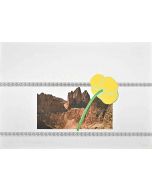
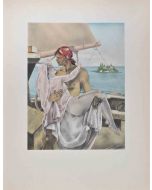
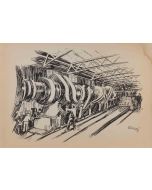

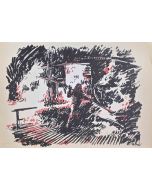

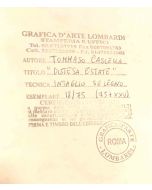

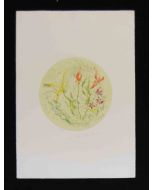

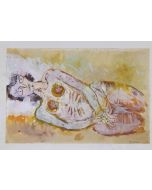
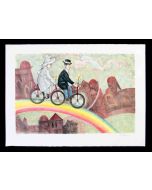

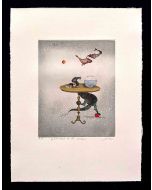

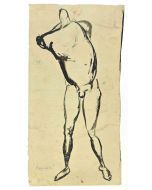




Validate your login
Accedi
Creare un nuovo account